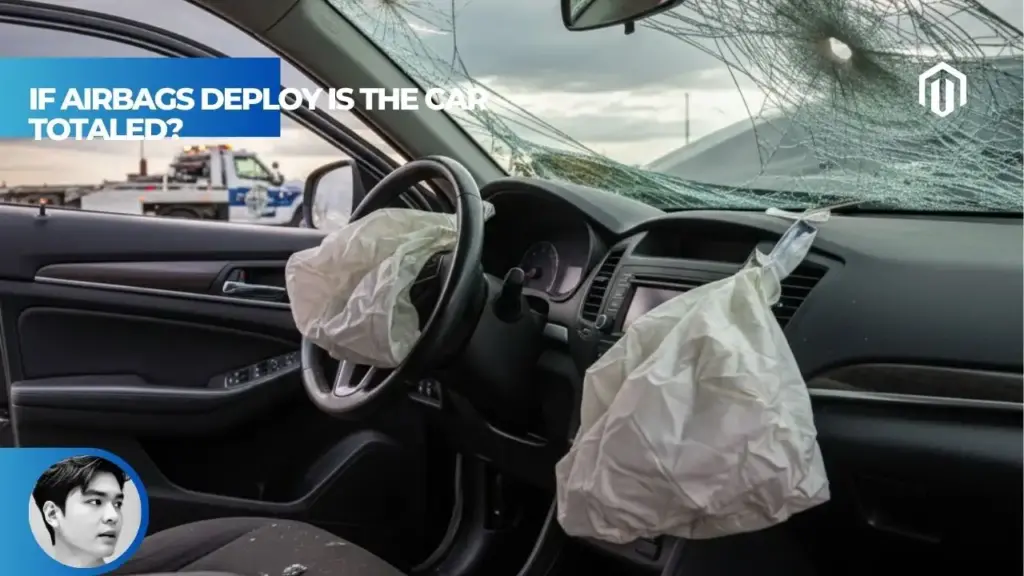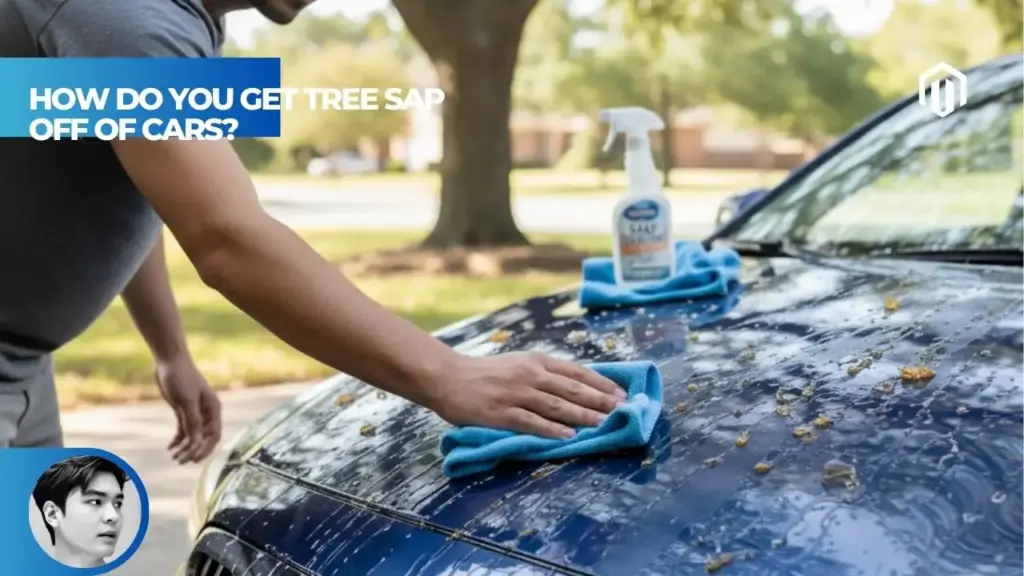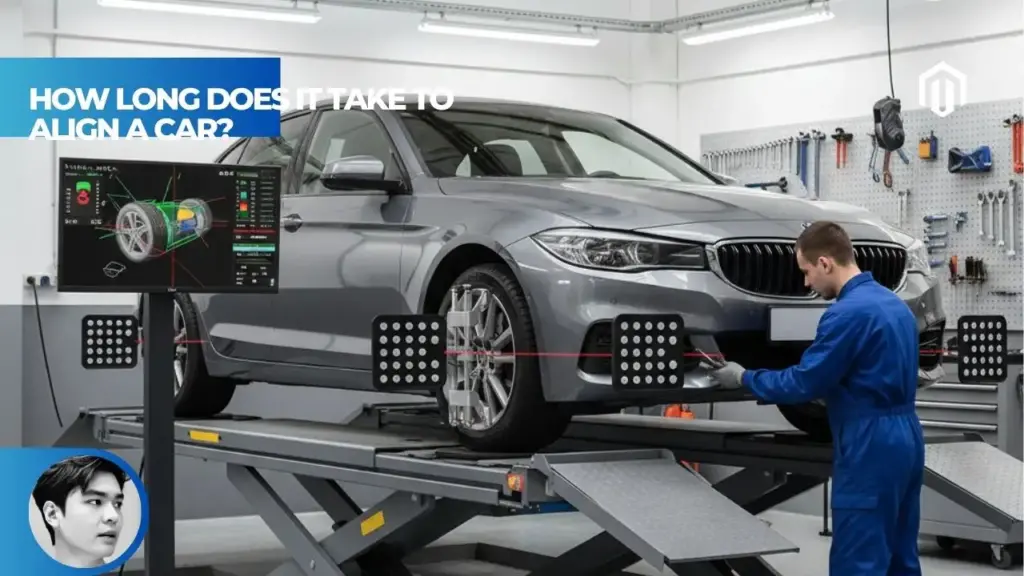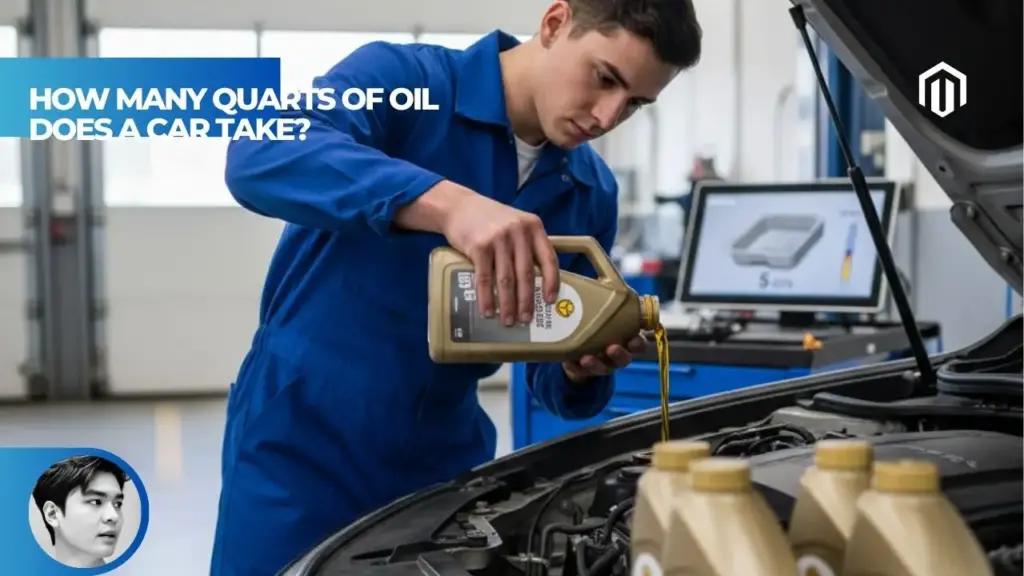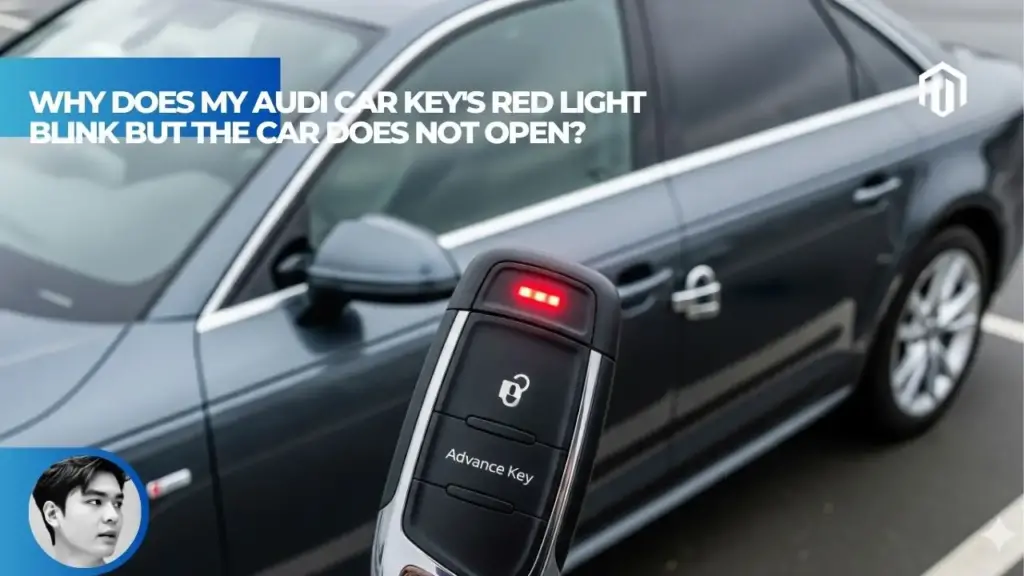You may also like:
- 【Explained】Do You Need Good Credit to Lease a Car? (A Full Guide)
- 【Explained】Can I Pay Audi Financial with Credit Card? (A Full Guide)
- 【Explained】When Does the 2-Hour Car Seat Rule End for Babies?
- 【Explained】How Long Does It Take to Buy a Car? A Step-by-Step Timeline
- 【Explained】Can You Jumpstart a Car With a Bad Alternator?
Yes, you can get a car with bad credit by saving a substantial down payment (10-20%), getting pre-approved from multiple lenders before shopping, and choosing an affordable vehicle that fits your budget. While you’ll face higher interest rates averaging 13-21% APR for subprime borrowers, proper preparation and strategy can help you avoid predatory loans and rebuild your credit through the auto loan.

#Step 1: Check Your Credit and Set a Realistic Budget
Understanding your exact credit situation determines your financing options and realistic vehicle choices. Many buyers skip this crucial step, walking into dealerships blind and accepting whatever terms they’re offered.
How to Improve Credit Score Before Buying a Car
Before applying for any auto loans, obtain your free credit reports from all three bureaus through AnnualCreditReport.com. Studies show 79% of credit reports contain errors, and correcting them can boost your score by 20-100 points within 30 days[1]. Focus on disputing inaccuracies, paying down credit card balances below 30% utilization, and avoiding new credit inquiries.
Quick credit improvements that help with auto loans:
- Pay off small collection accounts (under $100)
- Become an authorized user on someone’s good account
- Request goodwill deletions for isolated late payments
- Pay credit cards multiple times monthly to lower reported balances
Getting Pre-Approved for a Bad Credit Car Loan
Pre-approval provides negotiating power and prevents dealer markups. Apply with 3-5 lenders within a 14-day window—multiple auto loan inquiries count as one for scoring purposes. Online lenders like Capital One Auto Navigator and local credit unions offer pre-approval without dealer involvement.
The pre-approval process reveals your actual buying power. A buyer thinking they can afford a $25,000 car might discover they’re only approved for $15,000, saving them from dealership embarrassment and helping them set realistic expectations.
What Credit Score is Needed to Buy a Car
While prime borrowers with scores above 661 receive average rates of 6.78% for new cars, subprime borrowers aren’t excluded from financing[2]. Different lenders have varying minimums:
| Credit Score Range | Classification | Average APR (New) | Average APR (Used) | Approval Likelihood |
|---|---|---|---|---|
| 781-850 | Super Prime | 5.27% | 7.15% | Guaranteed |
| 661-780 | Prime | 6.78% | 9.39% | Very High |
| 601-660 | Near Prime | 9.97% | 13.95% | High |
| 501-600 | Subprime | 13.38% | 18.90% | Moderate |
| 300-500 | Deep Subprime | 15.97% | 21.58% | Limited |
How to Get a Car with a 500 Credit Score
With a 500 credit score, you’re in the deep subprime category facing average rates of 21.58% for used cars[2]. Success requires aggressive preparation:
- Save minimum 20% down payment
- Document stable income for 12+ months
- Consider older, less expensive vehicles
- Apply with subprime specialists like Exeter Finance or Credit Acceptance
Real example: A buyer with a 500 score purchasing a $10,000 used car with $2,000 down at 21% APR pays $232 monthly for 48 months, totaling $11,136 in payments.
How to Get a Car with a 600 Credit Score
A 600 score opens more doors, qualifying for subprime rather than deep subprime rates. You’ll average 18.90% APR on used cars, but with proper preparation can potentially negotiate down to 15-17%[2]. Focus on credit unions and online lenders who often beat dealer rates by 2-4%.
First-Time Car Buyer No Credit
No credit differs from bad credit—you’re an unknown rather than proven risk. First-time buyer programs through manufacturers like Honda, Toyota, and BMW’s college graduate programs offer special rates. Requirements typically include:
- Proof of employment or job offer
- $1,000+ down payment
- Gross income of $1,800+ monthly
- No previous auto loans
#Step 2: Save for a Larger Down Payment
Down payment size directly impacts approval odds, interest rates, and monthly payments. It’s your most powerful tool for overcoming bad credit.
How Much Should My Down Payment Be
Lenders typically require 10% minimum or $1,000, whichever is greater, but this barely meets requirements[3]. Autvex recommends saving 20% for optimal results. On a $15,000 vehicle, that’s $3,000 versus the minimum $1,500—but the difference in loan terms is substantial.
Down payment impact on a $15,000 car with 600 credit score:
- 10% down ($1,500): $305/month, 19% APR, $14,640 total interest
- 20% down ($3,000): $244/month, 17% APR, $11,712 total interest
- Savings: $61/month and $2,928 total
Large Down Payment for Bad Credit Car Loan
Larger down payments reduce lender risk exponentially. Data shows approval rates increase by 35% when down payments exceed 20% for subprime borrowers[4]. Beyond approval, benefits include:
- Lower interest rates (1-3% reduction possible)
- Shorter loan terms available
- Avoiding underwater loans immediately
- Building instant equity
Consider liquidating assets temporarily: selling recreational items, taking a second job for 2-3 months, or borrowing from retirement (if you can repay quickly).
Trade-In Value as Down Payment
Your current vehicle’s trade-in value counts toward the down payment. However, dealerships typically offer 15-20% less than private sale value. A car worth $5,000 privately might fetch only $3,500-4,000 as trade-in.
Maximize trade value by:
- Detailing the vehicle professionally
- Fixing minor issues (burnt bulbs, worn wipers)
- Gathering maintenance records
- Getting quotes from CarMax and Carvana for comparison
Bad Credit Car Loans No Money Down
“No money down” advertisements target desperate buyers but hide massive costs. These loans feature the highest possible interest rates, extended terms, and immediate negative equity.
$500 Down Car Bad Credit
Some dealers advertise “$500 down” specials, but read carefully—this often means $500 plus taxes, fees, and first payment, totaling $2,000-3,000. These high-risk loans carry rates exceeding 25% APR and should be last resorts.
Guaranteed Approval $0 Down
“Guaranteed approval” without money down almost always means Buy Here Pay Here lots charging maximum legal interest rates (often 29.99% in some states). A $10,000 car becomes $20,000+ over the loan term. These dealers also install GPS trackers and remote disabling devices.
Is It Possible to Get a Car with No Money Down and Bad Credit
Technically possible but financially devastating. Without a down payment, you’re immediately underwater, pay maximum rates, and have no negotiating power. Statistics show 43% of zero-down subprime loans default within two years[5].
#Step 3: Explore Lenders and Get Pre-Approved
Shopping multiple lenders is crucial—rates can vary by 5-10% for the same borrower. Apply strategically to minimize credit impact.
Subprime Auto Lenders
Specialized subprime lenders understand bad credit and offer more flexibility than traditional banks. Major players include Santander Consumer USA, Credit Acceptance Corporation, and Exeter Finance. These lenders work through dealer networks but offer better terms than dealer-direct financing.
Subprime lender characteristics:
- Minimum scores around 500-550
- Income requirements of $1,500+ monthly
- Higher rates but clearer terms
- Faster approval processes
Credit Unions for Bad Credit Car Loans
Credit unions offer the best rates for bad credit borrowers, often 2-4% lower than banks[6]. Membership requirements are minimal—many accept anyone who lives, works, or worships in their area. Pentagon Federal and Navy Federal accept nationwide members through small donations to affiliated charities.
Credit union advantages:
- Average rates 1.95% lower than banks
- More flexible underwriting
- Willing to consider explanations
- Relationship-based lending
Online Auto Loans for Bad Credit
Online lenders like Carvana, RoadLoans, and myAutoLoan provide convenient shopping with competitive rates. The application process takes 5-10 minutes with instant pre-qualification. These platforms show actual rates, not just ranges.
Capital One Auto Navigator Bad Credit
Capital One’s Auto Navigator stands out for bad credit buyers, offering pre-qualification without hard credit pulls. The platform shows actual rates and payments, valid at thousands of dealers. Approval rates reach 67% for applicants with 550+ scores[7].
Car Dealerships That Work with Bad Credit
Not all dealerships handle subprime equally. Franchise dealers with special finance departments offer better rates and protections than independent lots.
In-House Financing Car Dealerships
In-house financing means the dealer acts as lender, keeping loans on their books rather than selling to banks. This allows flexibility but increases costs. Rates average 18-24% with weekly or bi-weekly payments required.
In-house financing red flags:
- GPS trackers mandatory
- No grace periods
- Limited vehicle selection
- No credit bureau reporting (won’t build credit)
Guaranteed Auto Financing
“Guaranteed” financing usually means approval regardless of credit—at a price. These programs require substantial down payments and charge maximum rates. A reliable used car under $10,000 makes more sense than stretching for something newer.
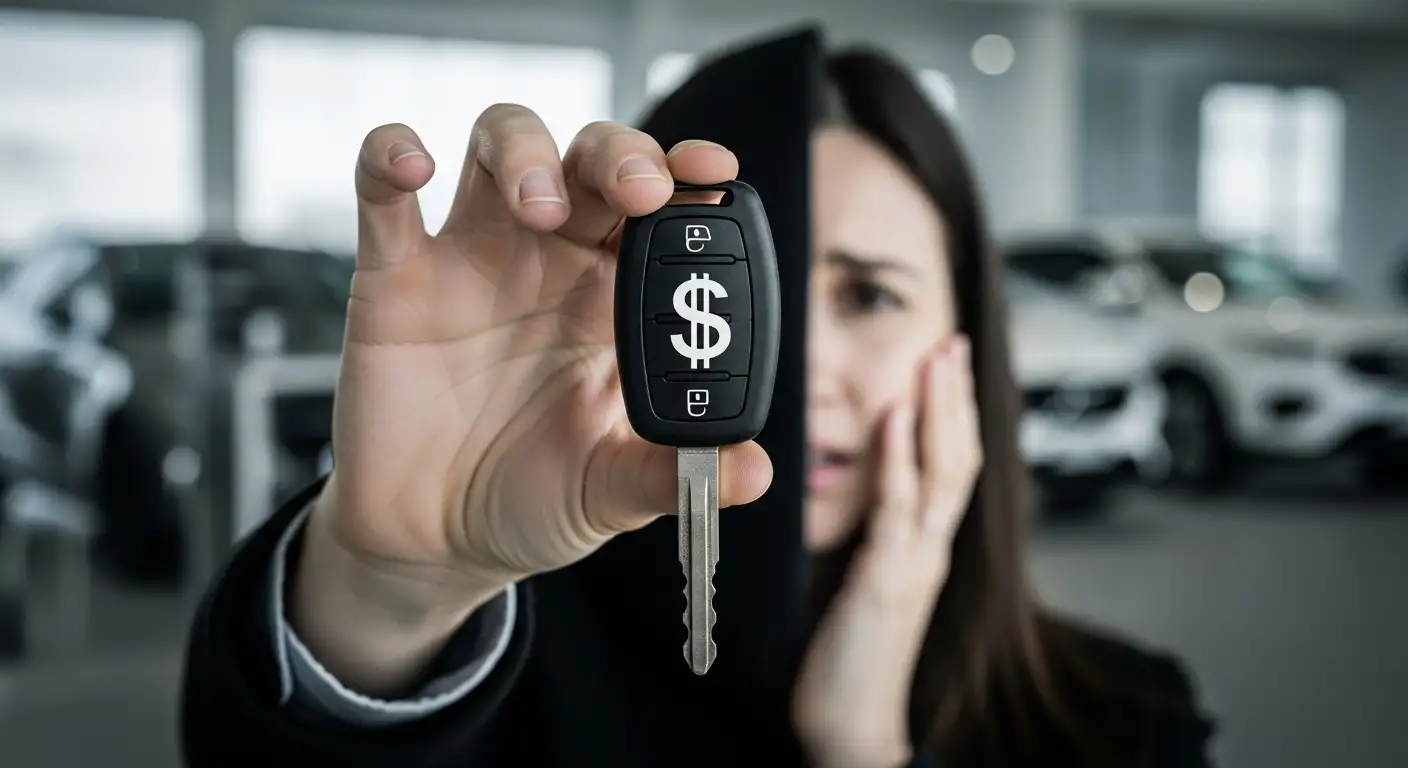
#Step 4: Choose the Right Car and Negotiate
Vehicle choice impacts approval as much as credit score. Lenders prefer reliable, common vehicles that hold value.
Buy Here Pay Here (BHPH) Car Lots
BHPH lots provide last-resort financing when other options fail. The average BHPH interest rate is 19.9%, with some charging the maximum legal rate of 29.99%[8]. These dealers profit more from financing than vehicle sales.
Dangers of ‘Buy Here Pay Here’ Loans
BHPH dangers extend beyond high rates:
- No warranty protection on most vehicles
- Aggressive repossession (some repo after one missed payment)
- Hidden GPS trackers and starter interrupt devices
- No credit reporting unless you default
- Limited legal recourse due to arbitration clauses
A typical BHPH scenario: $8,000 car financed at 24% for 36 months equals $317 monthly payments totaling $11,412—paying $3,412 in interest alone.
Is It Better to Go to a Buy Here Pay Here Lot
Only when no other options exist. Exhaust credit unions, online lenders, and cosigner options first. If BHPH becomes necessary:
- Get mechanical inspection before purchase
- Read every contract line
- Never accept weekly payments (bi-weekly minimum)
- Confirm they report positive payment history
How to Avoid Getting Ripped Off Bad Credit Car
Knowledge prevents exploitation. Common dealer tricks include:
- Payment packing: Adding unwanted products to monthly payment
- Spot delivery scams: Letting you take car before financing finalizes
- Yo-yo financing: Calling back saying financing fell through
- Rate markup: Dealers can legally mark up rates 2-3%
Predatory Car Loans
Predatory loans feature impossible terms designed for default. Warning signs:
- Interest rates above 25%
- Loan terms exceeding 72 months
- Required purchases of add-ons
- Mandatory arbitration clauses
- Balloon payments
The FTC reports 2.4 million consumers fell victim to auto loan fraud in 2024[9].
What Is In-House Financing
In-house financing differs from traditional loans—the dealership owns your loan rather than selling it to banks. This allows flexibility but eliminates consumer protections. Dealers can repossess without court orders in many states.
#Step 5: Finalize and Build Credit
The final steps determine whether this loan helps or hurts your financial future.
What Documents Do I Need for a Bad Credit Car Loan
Come prepared with comprehensive documentation to speed approval:
- Driver’s license and secondary ID
- Social Security card
- Proof of income (last 3 pay stubs)
- Proof of residence (utility bill)
- Bank statements (3 months)
- References (6-8 with phone numbers)
- Proof of insurance
- Down payment in certified funds
Proof of Income for Car Loan
Lenders require debt-to-income ratios below 50%, meaning your monthly debts including the new car payment shouldn’t exceed half your gross income. Self-employed buyers need two years of tax returns. Gig workers should document all income sources through bank deposits.
Alternative income proofs accepted:
- Social Security award letters
- Pension statements
- Alimony/child support orders
- Investment account statements
Getting a Co-Signer for a Car Loan
Co-signers with 650+ credit scores can reduce your rate by 3-8%. They assume equal responsibility for the loan, so defaults damage their credit too. Statistics show co-signed loans have 35% lower default rates[10].
Will a Co-Signer Help Me Get a Car with Bad Credit
Yes, dramatically. Co-signers transform your application from subprime to near-prime in lenders’ eyes. Benefits include:
- Lower interest rates
- Higher approval amounts
- Better loan terms
- Access to better lenders
Choose co-signers carefully—this is a major financial commitment affecting relationships.
Interest Rates for Bad Credit Car Loans
Current average rates by credit category show the true cost of bad credit:
| Credit Score | New Car APR | Used Car APR | $15,000 Loan Monthly (60mo) | Total Interest Paid |
|---|---|---|---|---|
| 781-850 | 5.27% | 7.15% | $284 | $2,040 |
| 661-780 | 6.78% | 9.39% | $310 | $3,600 |
| 501-600 | 13.38% | 18.90% | $385 | $8,100 |
| 300-500 | 15.97% | 21.58% | $420 | $10,200 |
What Is a Subprime Interest Rate
Subprime rates start around 10% and can reach legal maximums of 25-30% depending on state. The average subprime rate is 18.90% for used cars, compared to 9.39% for prime borrowers[2]. This 9.51% difference costs thousands over the loan term.
Average APR for Bad Credit Auto Loan
As of 2025, average APRs for bad credit borrowers are:
- Deep subprime (300-500): 21.58% used, 15.97% new
- Subprime (501-600): 18.90% used, 13.38% new
- Near prime (601-660): 13.95% used, 9.97% new
These rates assume standard terms. Longer loans or minimal down payments push rates higher.
High Monthly Car Payments Bad Credit
Bad credit creates a compound problem—higher prices for older cars plus higher interest rates. The average subprime borrower pays $549 monthly for used vehicles versus $418 for prime borrowers[2]. Budget at least 15% of gross income for total transportation costs including insurance.
Special Circumstances
Certain situations require modified approaches to secure financing.
How to Get a Car After Bankruptcy
Post-bankruptcy auto loans are available immediately after discharge, though waiting 6-12 months improves rates. Chapter 7 filers often qualify easier than Chapter 13 since debts are eliminated. Specialized lenders like Day One Credit focus on post-bankruptcy lending.
Requirements typically include:
- Discharge papers
- Proof of current income
- $1,000+ down payment
- Explanation letter
- No defaults since filing
Expect rates 3-5% higher than standard subprime initially, improving after 12 months of payments.
How to Get a Car After Repossession
Recent repossession creates the toughest financing challenge. Most lenders require 12 months since repo, but some accept immediate applications with larger down payments. Approval rates are 45% lower within six months of repossession[10].
Strategies for post-repo financing:
- Save 25-30% down payment
- Consider much older/cheaper vehicles
- Get co-signer if possible
- Document what caused repossession
- Show current stability
How to Get a Car with No Credit
No credit proves easier than bad credit since you’re unproven rather than risky. First-time buyer programs through manufacturers offer competitive rates with proof of income and small down payments.
Best options for no credit:
- Credit union starter loans
- Manufacturer first-time buyer programs
- Student/graduate specials
- Secured credit card for 6 months first
- Co-signer with established credit
Is It Better to Save Up and Pay Cash for a Car If I Have Bad Credit
Cash purchases avoid interest but delay transportation and miss credit-building opportunities. A financed $8,000 car at 19% APR costs $10,560 over three years—but provides immediate transportation and credit improvement. Weigh opportunity costs carefully.
Autvex analysis suggests financing makes sense when:
- You need transportation for work
- The car enables income increase
- Interest cost is less than credit score improvement value
- Public transportation costs exceed car payment
Is It Easier to Get a Loan from a Credit Union or a Dealership
Credit unions typically offer better rates and terms, while dealerships provide convenience and special relationships with subprime lenders. Credit unions average 2.5% lower rates but may have stricter requirements[6].
| Factor | Credit Union | Dealership |
|---|---|---|
| Average Rate | Lower by 2-3% | Higher but negotiable |
| Approval Speed | 1-3 days | Same day |
| Down Payment | Flexible | Often higher |
| Vehicle Selection | Any dealer | Limited to inventory |
| Relationship | Long-term | Transaction only |

Key Takeaways
- Check your credit first – Fix errors and know your score before shopping
- Save 10-20% down minimum – Larger down payments dramatically improve terms
- Get pre-approved from multiple lenders – Don’t accept first offer
- Choose affordable, reliable vehicles – Payment should be under 15% of income
- Avoid Buy Here Pay Here unless absolutely necessary – Try credit unions first
- Read everything before signing – Predatory loans hide in fine print
- Make every payment on time – This loan rebuilds credit for better future rates
Next Steps
Start immediately by pulling your credit reports from all three bureaus to identify and dispute any errors—this free step could improve your score within 30 days. While waiting for disputes, begin saving aggressively for a down payment, aiming for 20% of your target vehicle price. Open a separate savings account specifically for this purpose to avoid temptation.
Next, join a local credit union if you’re not already a member, as they offer the best rates for challenged credit. Research which lenders in your area specialize in subprime auto loans, and get pre-approved from at least three before visiting any dealership. This pre-approval gives you negotiating power and prevents dealers from marking up your rate.
When ready to shop, focus on reliable used vehicles from franchised dealerships with special finance departments. Avoid Buy Here Pay Here lots unless you’ve exhausted all other options including co-signers. Bring all required documentation to streamline the process, and never discuss monthly payments—negotiate the vehicle price and interest rate separately.
After purchasing, set up automatic payments to ensure you never miss a due date, as on-time payments will rebuild your credit score. Consider refinancing after 12 months of perfect payment history—many buyers reduce their rates by 3-5% through refinancing. Most importantly, view this high-interest loan as temporary; your next car loan will have much better terms if you handle this one responsibly.
Finally, protect your investment with proper insurance and maintenance. While comprehensive coverage costs more, it’s required for financed vehicles and protects against total loss. Regular maintenance preserves value and prevents costly repairs that could jeopardize your ability to make payments.
FAQs
What is the easiest way to get a car with bad credit?
Get pre-approved from a credit union or online subprime lender, save at least 10% down payment, and choose an affordable used vehicle from a franchise dealership’s special finance department.
What credit score is needed to buy a car?
While prime rates require 661+, subprime lenders approve scores as low as 500. Deep subprime borrowers (300-500) face rates averaging 21.58% for used cars but can still get approved with proper preparation.
Can I get a car loan with a 500 credit score?
Yes, but expect 20%+ interest rates, require 20% down payment minimum, and face limited vehicle selection. Focus on subprime specialists and credit unions rather than traditional banks.
How much of a down payment do I need for a car if I have bad credit?
Minimum 10% or $1,000, whichever is greater. However, 20% down payment significantly improves approval odds and reduces interest rates by 1-3%.
Is it better to go to a “Buy Here Pay Here” lot?
Only as absolute last resort. BHPH lots charge 20-30% interest with aggressive repossession policies. Try credit unions, online lenders, and franchise dealerships first.
What is the average interest rate for a bad credit car loan?
Subprime (501-600 score) averages 18.90% for used cars. Deep subprime (300-500) averages 21.58%. Prime borrowers pay only 9.39% for comparison.
Will a co-signer help me get a car with bad credit?
Yes, co-signers with good credit can reduce your rate by 3-8% and improve approval odds by 35%. They assume equal loan responsibility, so defaults affect their credit too.
Is it better to save up and pay cash for a car if I have bad credit?
Cash avoids interest but delays transportation and misses credit-building opportunity. Consider financing if the vehicle enables work/income and interest costs less than credit improvement value.
What documents do I need to bring to a bad credit car dealership?
Bring license, pay stubs (3 months), bank statements, proof of residence, references (6-8), insurance proof, and down payment in certified funds.
Can I get a car loan with no money down and bad credit?
Technically possible but financially devastating with 25%+ rates and immediate negative equity. These loans have 43% default rates within two years.
Is it easier to get a loan from a credit union or a dealership?
Credit unions offer rates 2-3% lower but take longer. Dealerships provide same-day approval but higher rates. Try credit union pre-approval first.
What is “in-house financing”?
Dealership owns and services the loan rather than selling to banks. Offers easier approval but higher rates (18-24%), limited selection, and fewer consumer protections.
References
- Federal Trade Commission. (2025). Credit Report Errors and Dispute Resolution. https://www.ftc.gov
- Experian. (2025). Average Car Loan Interest Rates by Credit Score. https://www.experian.com/blogs/ask-experian/average-car-loan-interest-rates-by-credit-score/
- Jennings Volkswagen. (2024). How Much Down Payment for a Car with Bad Credit. https://www.jennings-vw.com
- Cox Automotive. (2025). Auto Loan Trends and Subprime Analysis. https://www.coxautoinc.com
- Consumer Financial Protection Bureau. (2025). Auto Loan Data Trends. https://www.consumerfinance.gov/data-research/consumer-credit-trends/auto-loans/
- National Credit Union Administration. (2025). Credit Union Auto Loan Advantages. https://www.ncua.gov
- Capital One. (2025). Auto Navigator Approval Statistics. Internal data
- National Independent Automobile Dealers Association. (2025). BHPH Industry Report. https://www.niada.com
- Federal Trade Commission. (2025). Auto Loan Fraud Statistics. https://www.ftc.gov
- TransUnion. (2025). Auto Loan Performance by Credit Category. https://www.transunion.com

I am a senior automotive analyst at Autvex. Expert vehicle evaluations, in-depth reviews, and objective analysis helping readers make informed automotive decisions with years of industry experience.


